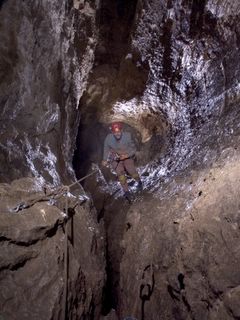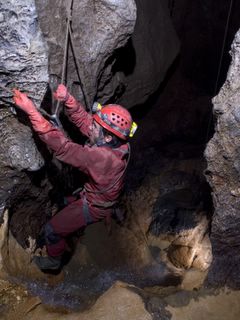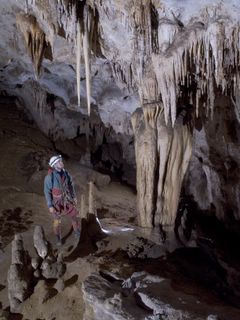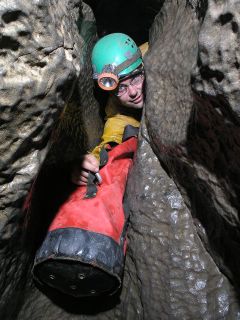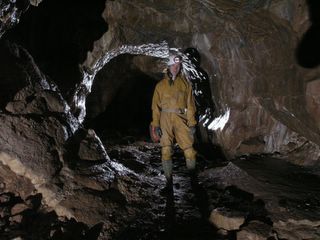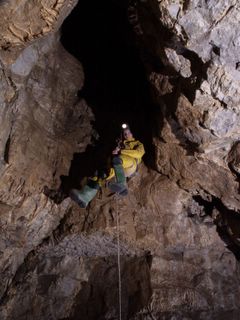Armed with a couple of Metz hammerhead flashguns recently purchased on Ebay, I organised a trip to Gaping Gill last Saturday to attempt to photograph the main chamber. This was primarily a learning trip and we attempted to take a series of images which can be layered together to create a single picture.
We had a few problems! It was very wet for a start, so spray in the air made things difficult. One of the flashguns stopped working early on, possibly because of the damp. Also I was trying to fire the flashes using slave units triggered via the built in flash on the camera (covered with some PVC tape to stop the flash illuminating the picture). This was not powerful enough to trigger the flashes when not in line of site at the far end of the chamber. The tape did not block enough visible light either, so parts of the camera housing were illuminated in purple (I had no black tape to hand) and reflected in the inside of the housing glass. However, enough images were captured to create some pictures. Here is a quick rough edit done on Monday night:
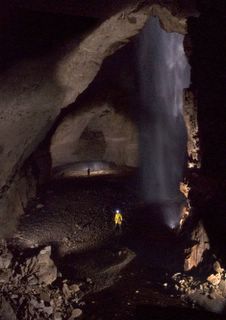
Gaping Gill Main Chamber
The main points learned from this trip were:
1) I really need to use a tripod for these set ups. My waterproof housing prevents the camera being mounted on a tripod, so I hung the camera from a rock using the housing straps. But this meant the shots all had to be aligned by hand and I could not see the back of the camera easily, or adjust the settings without moving it.
2) Even these big flash guns are not very bright in such a big chamber! The flashes also need to be sealed in bags to keep the water off them.
3) The noise on the pictures taken at 400 ISO is quite high. I should try and take pictures at 200 ISO if at all possible.
4) Care needs to be taken not to over-expose people using these big flash guns. The cave looks dark but the people are burnt out in most shots.
5) I need a more powerful and better masked flash on the camera to trigger the slave units without reflecting the inside of the housing. (I have since bought a cheap flash gun on Ebay for this purpose. All my existing guns have high voltage triggers, which can damage digital cameras. This one was listed as low voltage on a website I found which has a list of
flash guns and trigger voltages.)



